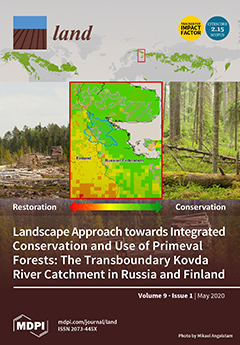Resource information
This paper presents the results of 39 years of observations conducted at the Chabyda station to monitor the thermal state of permafrost landscapes under current climatic warming. The analysis of long-term records from weather stations in the region has revealed one of the highest increasing trends in mean annual air temperature in northern Russia. The partitioning of the energy balance in different landscape units within the study area has been analyzed. Quantitative relationships in the long-term variability of ground thermal parameters, such as the ground temperature at the bottom of the active layer and seasonal thaw depth, have been established. The ground temperature dynamics within the depth of zero annual amplitude indicates that both warm and cold permafrost are thermally stable. The short-term variability of the snow accumulation regime is the main factor controlling the thermal state of the ground in permafrost landscapes. The depth of seasonal thaw is characterized by low interannual variability and exhibits little response to climate warming, with no statistically significant increasing or decreasing trend. The results of the ground thermal monitoring can be extended to similar landscapes in the region, providing a reliable basis for predicting heat transfer in natural, undisturbed landscapes.


